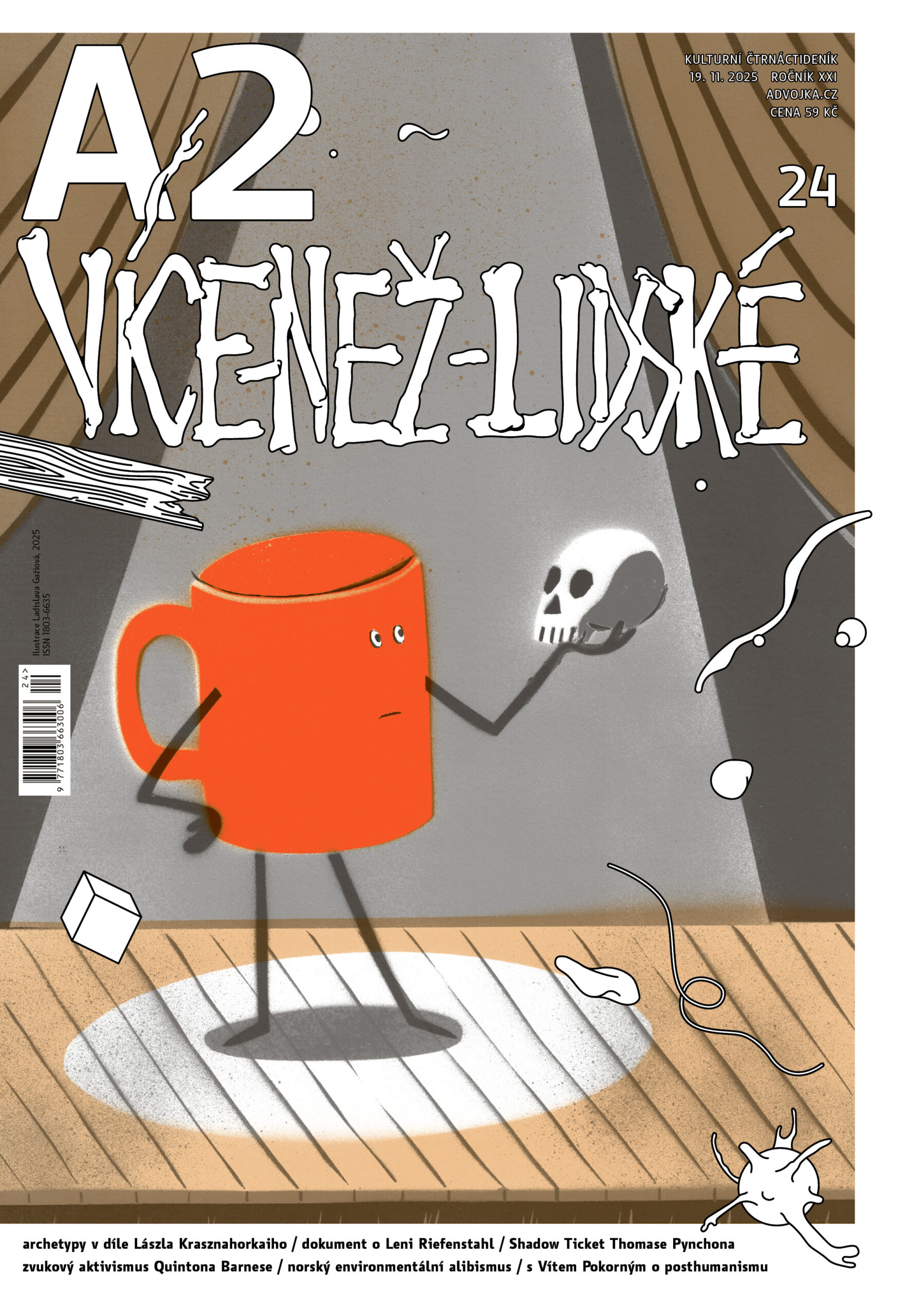Folklore pours out of TV daily
With Evžen Gál about Hungarian cultural politics and more
“Given Hungary's difficult and tense social and political situation, contemporary literature has been blossoming” says Hungarian scholar Evžen Gál. We talked to him about the transformation of the Hungarian literary canon; the preferences of the contemporary cultural politics; the official and, on the other hand, the translated authors, as well as folklore and nationalism.

What is the contemporary cultural politics in Hungary and how does it impact the literary scene? Czech readers do not have much experience with the Hungarian environment and there is a language barrier as well.
The very term, cultural politics, presents a problem. When we look at, for instance, today’s structure of Hungarian ministries, there is no such institution as the Ministry of education or culture. There is Emberi erőforrások minisztériuma, meaning Ministry of human resources that oversees quite the variety. This monster is headed by Zoltán Balog, otherwise reformed priest. I remember that two years ago when Hungary was an honorary guest at the Book World I had the impression that Balog was a bit ashamed that there is no „cultural front“ and that Hungary needed to be represented by such people as Esterházy or Nádas. That is definitely a bit of exaggeration but the Hungarian literature that is published in the Czech Republic and elsewhere is not part of the preferred, elite culture in contemporary Hungary. If we wanted to name those who belong to the elite, we would find figures that appear to belong in literary history. These are, for example, József Nyírő or Albert Wass; Transylvanian authors. There is
no doubt that they both were talented. The first one, however, was part of the last military Hungarian Parliament, including at the time of the arrow cross party rule. The other received, in his capacity as officer of the Hungarian army, German iron cross for valour. Now, suddenly, they pulled them out, publishing their books, naming streets after them, and creating their sculptures. There was actually another older figure – a woman writer – Cécile Tormay who age-wise pretty much belonged to the first generation of Nyugatu; a Hungarian western-oriented literary journal. But only given her age. In 1920s, she became known for her antisemitism and openly supported fascism. Surely she, too, had great literary talent. She was even nominated by the conservative literary circles for the Nobel Prize.
From the contemporary authors – Péter Esterházy has recently died and now Sándor Csoóri who belonged among the top of the so called Hungarian folk writers is also dead. He was a long-time leader of the World association of Hungarians. Then came the ultranationalists who no longer had Orban’s support but Csoóri still did. Even though we would be hard pressed to seek some official cultural politics, there are various arguments that speak for themselves. While, for instance, Esterházy did not receive a state funeral, the government took Csoóri as their own. I would say that when it comes to literature, no important translated author supports the government. This is clearly seen in that shortly after Orban’s supporters gained power in 2010, they founded the Hungarian academy of arts even though one such academy had already existed and united pretty much all important authors.
What is the difference between the academies?
The old academy associated authors who supported a variety of thoughts. It was small, but it existed. The new academy is all about political affiliations. Those who become part of the academy also receive a substantial monthly check. There is only one writer – Lajos Grendel. Which is a bit contradictory to the reasons the Hungarian literary community regards his works. The Hungarian cultural academy was allocated a huge building at the Hero’s Square, the former Műcsarnok, i.e. Hall of Art. It is led by György Fekete, an elderly architect who focuses on interiors and applied art. Member of the Christian democratic people’s party, by the way. And, in fact, there is also one woman author who is known in the Czech Republic as well; Anna Jókai. Although she definitely did not belong among the greatest opponents of the former regime, her books were published then; after all. Now, suddenly, she publishes poems and fiction; the diction reminds of the premodern time. What irritated the authors of Nyugatu then, is
what she now represents: nationalism and clericalism, which were unbearable even hundred years ago.
But the government did one thing well – Imre Kertész. After the Nobel Prize, he moved to Berlin and gave overtly anti-Hungarian interviews that obviously provoked a huge deal of distaste among the conservative Hungarian community. I am sure you will agree that there needed to be a huge deal of compromise on both sides. When, after his return from Berlin to Hungary, the same conservative party, this time in the government, decided to award him the Order of Saint Stephen. This is the highest possible award, renewed by Fidesz. And he accepted. Of course he then had a state funeral with Orban present.
So the leading circles and official institutions create a canon out of regional or lesser-known artists. Do the others work in alternative, non-state structures?
First, I would not like to hurt someone by placing them in this or that category. For one, I am not familiar with artists and architects well enough to state something as categorical. These are also professions that are in a great need of commissions. But it is true that world renowned filmmakers such as István Szabó, Miklós Jancsó či Béla Tarr also aren’t members of the academy, even if they too need commissions. As far as publishers, there are several large publishing houses in Hungary, after all, and literature sells so well that some, including the better ones, make profit. Esterházy was a freelancer even under the former regime and even Péter Nádas, for instance, was completely translated into German. Given, or despite, Hungary’s difficult and tense social and political situation, contemporary literature has been blossoming. One doesn’t know what to read first. When it comes to journals, though, it’s far worse. This year, Lettre internationale, cofounded by the Czech critic A. J. Liehm,
folded. Lettre had ceased publication everywhere but in Hungary. There was also an excellent journal Holmi, and that also folded. There is a minimum of quality journals, but some regional ones have nationwide outreach, for example Jelenkor. But even these journals face difficulties since you need money to publish a journal – readers only cannot do it.
This means state support…
Yes, that is correct when it concerns literature. Currently, folklore has been receiving more and more support. I do enjoy quality folklore, and when I attend something like that once in a while, I take pleasure even in the texts, but the moment this pours out of the state TV on a daily basis, it is incredibly annoying.
This reminds a bit of institutionalizing of folklore that happened from 1950s even in this country. It appears that this is a safe way to promote nationalist affiliations without running into problems.
The purpose is clear. The official cultural politics has a clear course, albeit undeclared – it is about following on the period of the interwar Hungary. It is well depicted in architecture. They have totally cleaned up Kossuth’s square, claiming they would restore it to what it was way back. I can’t tell the last time I have been to Kossuth’s square…
I don’t like going to the Parliament. But they do not restore it back to its original state, rather to a state they claim is original. And then there is also modern Hungarian architecture, I mean the national style.
You probably mean the architect Imre Makovecz. By the way, here is an interesting connection: Makovecz used to refuse to join the original art academy to György Konrád, but also Anna Jókai and others belonged and he founded his own art academy. And it is out of this academy that Fidesz after Makovecz’s death created its private art academy that is included even in the constitution. I am not sure how many of those buildings of his you have seen.
Sometimes some of the buildings scare me. His older houses were, in my estimation, better.
He was always extravagant. But then he became an idol. He would insert old Hungarian symbols in his projects such as shamans, the Turul bird and so on. These mythological components have a bad reputation for they are very closely associated with the Horthy Hungary and directly to the Arrow Cross party. That memory still lingers among the people who lived during the World War II. At that time there were various fishy associations that evoked such mythology. And today there is a relatively large group of those who fight to renew the „original;“ for instance the Hungarian runic script.
Translated by Dagmar Frančíková.
Evžen Gál is a Hungarian scholar, translator, and essay writer. He has lived in Prague since 1976. He lectures on contemporary Hungarian literature in the Department of Central European Studies in the School of Philosophy at Charles University in Prague. He served as director of the Czech Center in Budapest from 2003 to 2009. He also focuses on sociolinguistic research of minorities.



